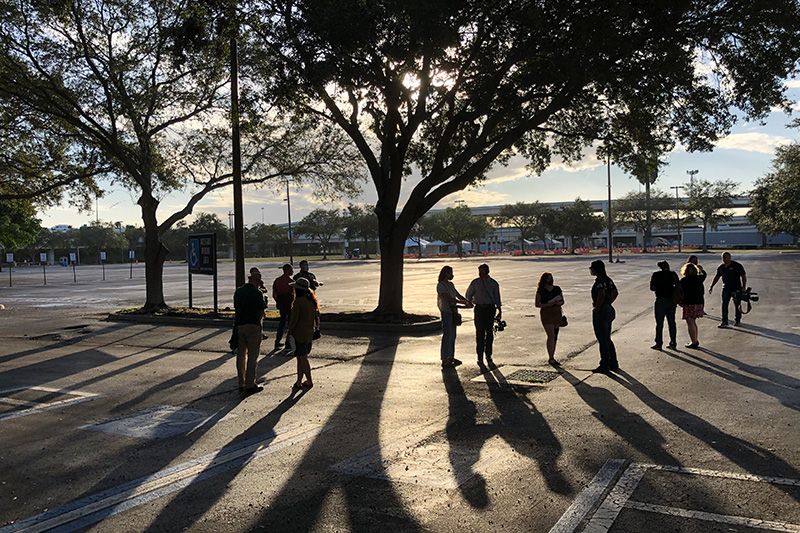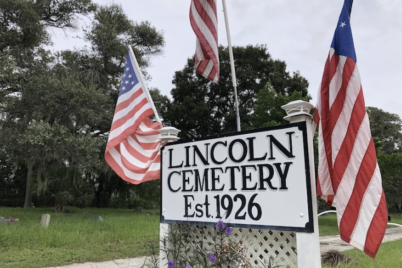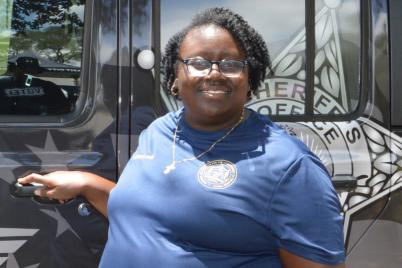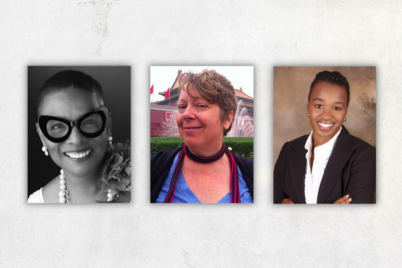Members from the African American Burial Grounds & Remembering Project met to tour the parking lots of the Tropicana field – the Oaklawn cemetery complex site. Photo courtesy of David Shedden.
ST. PETERSBURG — In Tampa Bay and across the nation, many African-American burial grounds and cemeteries have been lost to history, neglected, abandoned, even paved over and developed on. A research project funded by a University of South Florida anti-racism initiative seeks to recover and reimagine the forgotten history of these sacred places.
Consisting of faculty, staff, graduate students, and community partners from fields such as anthropology, business, English and the arts, the African American Burial Grounds & Remembering Project will identify and preserve these cemeteries in Tampa Bay.
They will do so by conducting interviews with people associated with such cemeteries through churches, funeral homes, and family connections to record oral histories, examining church records and historical archives to identify individuals buried and starting community conversations on how to best remember this traumatic history today.
“Working with communities and finding out about their heritage, I often find myself in cemeteries,” said Antoinette Jackson, professor and chair of the USF Department of Anthropology and principal investigator of the project. “Churches and where people are buried give you a feel for what that community is about. With this project, we hope to bring in the living community to understand the heritage of place by engaging with cemeteries and their history.”
The project’s focus will initially center on Zion Cemetery, one of the first African-American cemeteries in Tampa Bay, located beneath roads, warehouses, and a public housing complex just north of downtown Tampa, and St. Petersburg’s Oaklawn Cemetery complex, which consists of three cemeteries that lie under parking lots at Tropicana Field.
Based on research gathered, the team will produce the first digital story map focused on these local African-American cemeteries that combine oral histories, photographs, videos and archival information.
“The Black Lives Matter movement created greater awareness about stories that are usually overlooked that we need to be telling,” said Julie Armstrong, a co-principal investigator on the project and a professor of English at USF’s St. Petersburg campus. “Black lives matter when they are alive and also when they are dead, and recalling those who came before is important.”
Phase two of the project will actively engage the community on how these sites should be remembered and what they would like to see in these spaces, from historical markers to local history programs. An aspect of this work includes partnering with performance artists who will help tell the story of these burial grounds and the community of people who inhabited these places through art, poetry and photography to engage the public emotionally.
With additional funding and partnerships, phase three will expand the focus to other lost cemeteries throughout the Tampa Bay region.
“An alliance has already formed of those working on cemetery sites in the region, and sadly we are finding that there is no shortage of potential lost cemeteries,” Jackson said.
Historically segregated, African-American burial grounds from Tampa Bay to Manhattan to Tulsa were cemented over throughout the 20th century in the name of urban development. If these sacred sites weren’t paved over, many went into disrepair as they didn’t receive the same dedicated resources as other burial grounds or were forgotten as cities grew around them and local communities were displaced.
“This was a social injustice that took place in our country,” said Kathy Arthur, a co-principal investigator on the project and a professor of anthropology at USF’s St. Petersburg campus. “By listening to those who have been impacted by creating oral histories, we can bring some healing to this injustice and create spaces that draw people together for remembrance.”
Though some individuals and local organizations across the country have worked to identify lost burial sites, there has been a greater groundswell of support across the country to document and preserve such places in recent years due to the emergence of the Black Lives Matter movement and the introduction of the African-American Burial Grounds Network Act in the U.S. House of Representatives in 2018.
Adding to this remembrance work’s urgency is that both the historical Zion and Oaklawn cemetery sites, now Robles Park Village in Tampa and Tropicana Field in St. Petersburg, could undergo rapid redevelopment, according to city plans. Research team members hope findings from the project could influence city planning activities and development discussions.
“I want people to know that there was a there there,” Armstrong said. “There were communities of individuals, businesses, churches and a cemetery. There was something here, and it is part of our shared history.”
Partners in the project include Robles Park Village and Robles Park Tenant Council Association, Hillsborough County Branch of the NAACP, Carter G. Woodson African American Museum, Florida Public Archaeology Network, Cardno and Diamond View Studios.
Funding for the project came from the USF Research Task Force on Understanding and Addressing Blackness and Anti-Black Racism in our Local, National and International Communities. The group funded 23 projects that explore a wide range of systemic inequality issues, economic and health disparities, Black history and contemporary challenges to create a deeper understanding of complex issues while forging solutions and productive community partnerships.








